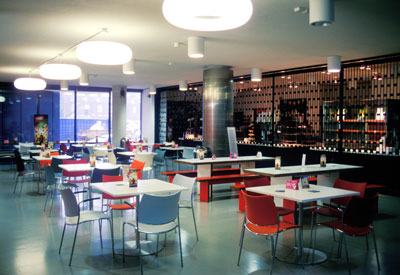Lighting Basics

Lighting accounts for an estimated 20% of all electricity use in the U.S. Of this, 80% is consumed by industries, businesses, offices and warehouses. In a typical 50,000 square foot commercial building, about $45,000 is spent annually on energy for lighting. Reducing the amount of energy used for lighting at your facility may save you money.
Turning off lights when they are not needed is one easy, free strategy to cut your company’s energy use and lower the electric bill. But, it is not the only strategy. Use the ideas outlined below to help reduce the amount of energy used for lighting at your company.
Efficient Lighting
Switching from T12 tri-phosphor lamps to T10 or T8 lamps will increase your energy efficiency. T10 lamps will operate on most ballasts designed for T12 lamps and require less energy to produce an equal amount of light. T8 lamps also fit most T12 ballasts and require less energy than T10 lamps. New T5 lamps are now available and use less energy than T8 lamps, but they require a smaller ballast be installed.
Replace incandescent lamps with fluorescent or compact fluorescent bulbs. Compact fluorescent lamps give the same amount of light as incandescent bulbs, but use a fraction of the amount of energy.
Light Levels
Reduce excess lighting. Remove two lamps from standard four-lamp fluorescent fixtures to reduce light levels and energy use. If light levels are too low, install a reflector above the remaining lamps to regain 20 to 30 percent of the lost light.
Task Lighting
Use small light fixtures over task areas that require additional light. Lighting an entire room to the level needed for some task areas uses unneeded electricity.
Lighting Controls
Occupancy sensors and time clocks that control lighting keep lights off when they are not needed. Another simple way to keep lights off in unused areas is to put stickers on light switches reminding workers to turn off the lights.
Resources
- Xcel Energy Program: One-Stop Lighting Program. This program is available to businesses with an electric demand between 10-400 kW in Xcel Energy’s Minnesota service territory. The Center for Energy and Environment is currently managing program.